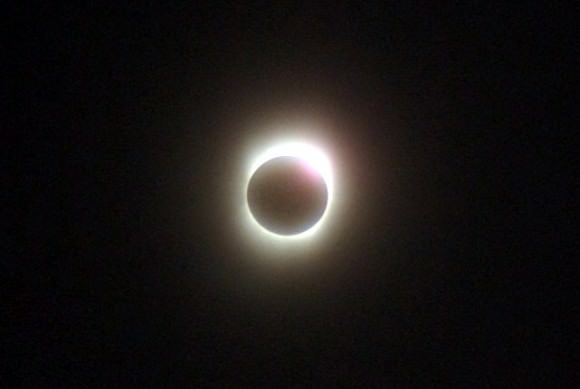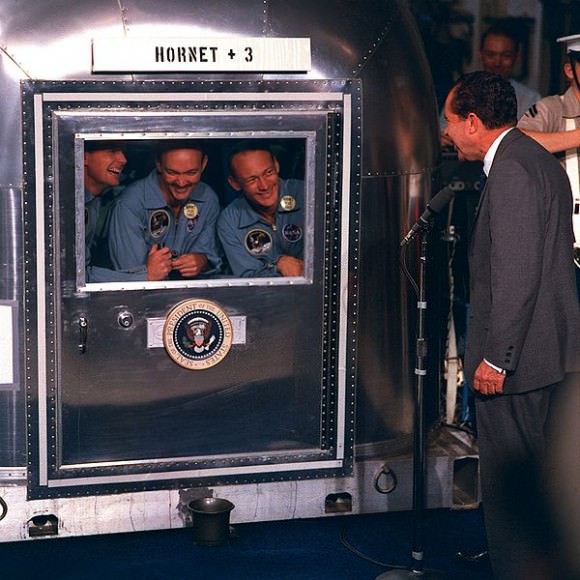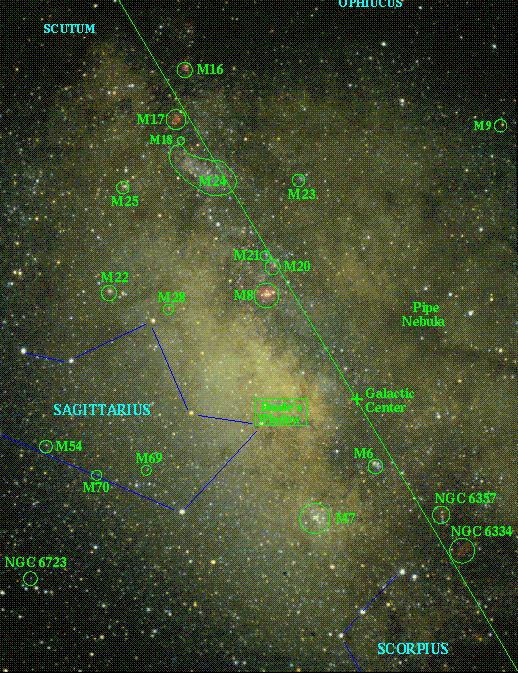Vixen R130Sf Newtonian Reflector Telescope and PortaMount II – R
So what's the latest telescope I've been testing? This time it's a Vixen R130Sf Newtonian Reflector Telescope and PortaMount II. I can tell you right now that I've never laid my hands on a telescope that I was more comfortable with out of the box than this one… But, I guess I really need to start the story from the beginning, don't I? Then follow me over to the Observatory and I'll tell you how this charming Vixen stole my heart away. (...)
Read the rest of Vixen R130Sf Newtonian Reflector Telescope and PortaMount II – Right In The Comfort Zone… (1,868 words)
Spitzer Finds a Cyclops Galaxy!

Imagine peering through your telescope and having a wild creature with one Cyclops-like eye looking back at you! NASA's Spitzer Space Telescope saw just that when it located galaxy NGC 1097, about 50 million light-years away. It has long, spindly arms of stars, and its one "eye" at the center of the galaxy is actually a monstrous black hole surrounded by a ring of stars. Plus, this creature looks to be carrying a smaller blue galaxy in its arms!
(...)
Read the rest of Spitzer Finds a Cyclops Galaxy! (378 words)
Happy 10th Birthday, Chandra X-Ray Observatory!
Ten years ago, on July 23, 1999, NASA's Chandra X-ray Observatory was deployed into orbit by the space shuttle Columbia. Far exceeding its intened 5-year life span, Chandra has demonstrated an unrivaled ability to create high-resolution X- ray images, and enabled astronomers to investigate phenomena as diverse as comets, black holes, dark matter and dark energy.
(...)
Read the rest of Happy 10th Birthday, Chandra X-Ray Observatory! (420 words)
July 22, 2009 Total Solar Eclipse – Incoming News…
The total solar eclipse which just occured on the 22nd of July 2009 was the longest in terms of maximum totality duration of the 21st century – lasting over six and a half minutes. Not since Saros 1991 have astronomers and eclipse chasers been treated to such a length of time! The eclipse footprint started in India along the western shore near Surat moved towards Butan and reached the southern tip of Nepal and the northern edge of Bangladesh. For other lucky astronomers, the eclipse path also took the event over the Chinese cities of Chengdu, Suining, Chonging, Wuhan, Xiaogan, Hangzhou, and Shanghai – yielding five minutes of totality. Leaving Shanghai the shadow raced across the ocean to fall across islands such as Toshima and Akusaki south of Japan and eventually the Marshall islands. Where did the longest time occur? The maximum eclipse duration of 6 minutes and 43 seconds was far off the coast in the Pacific Ocean! As I write this announcement, our readers are sending in their photos and stories to my home email (send them!!) and I just couldn't wait to show you some of the beginning results. It will take a short time to do a little translation work… But it's a small, wonderful world and this article will be updated very soon!
Astro Art of the Week: Space Travelers
Here's the second installment of our new feature, showcasing our readers' prowess with image editing software. This week's Astro Art of the Week was submitted by Laura Gardiner from Tucson, Arizona USA. This seemed to be a perfect image to use, as during Apollo 11 festivities on Monday, astronauts repeatedly talked about inspiring the next generation of space explorers. This is a collage Laura created several months ago with Photoshop, using several PS brushes downloaded from deviantart.com, along with a photo of her daughter and nephew. "I've gotten a lot of positive comments about it," she said. "I was new to Photoshop then, but I've been having fun learning new things. I probably would have done some things differently now, but all in all I think it turned out pretty neat. It was an experiment because I was fascinated by the idea of Photoshop's "brushes," so that's where the stars/galaxies/etc. came from. I didn't have any particular picture or project in mind when I made it…it just sort of came together after several hours of fooling around with stuff."
(...)
Read the rest of Astro Art of the Week: Space Travelers (105 words)
A Table-Top Test of General Relativity?

Even Albert Einstein might have been impressed. His theory of general relativity, which describes how the gravity of a massive object, such as a star, can curve space and time, has been used to predict small shifts in the orbit of Mercury, gravitational lensing by galaxies and black holes, and the existence of gravitational waves. Now, new research shows it may soon be possible to study the effects of general relativity in bench-top laboratory experiments.
(...)
Read the rest of A Table-Top Test of General Relativity? (680 words)
"Feelings" Are Back at NASA
Steely-eyed missile men may still be a part of NASA, but the space agency's newly sworn-in administrator says he is an unabashed hugger and admits to crying easily. "One more thing you'll learn about me, I cry," said Charlie Bolden at an all-hands video meeting with the NASA centers. "I think it's important to be passionate." Bolden's Deputy Administrator Lori Garver said she's a hugger, too and as Bolden and Garver hugged on stage, Garver exclaimed, "Feelings are not something that were popular in the last few years at NASA, but they're back. Feelings are back!"
(...)
Read the rest of "Feelings" Are Back at NASA (402 words)
Thirty-Meter Telescope Headed for Mauna Kea

The Thirty Meter Telescope, which is vying to be the inaugural member of an emerging class of giant eyes in the sky, is headed for the Mauna Kea in Hawaii.
That means the other contending site, Cerro Armazones in Chile, is off the drawing board.
(...)
Jupiter Impact Confirmed

As we reported yesterday, an amateur astronomer snapped evidence of an impact on Jupiter. Now, NASA has confirmed the black spot on the giant gas planet is in fact an impact and not just a weather-related disturbance. And Anthony Wesley has now made the biggest observation of his life.
"It still feels very surreal right now," he told Universe Today. "I guess it will take some time to really sink in (pun intended). I guess it shows that persistence and many hours at the scope eventually pays off."
(...)
Read the rest of Jupiter Impact Confirmed (525 words)
Astronauts Don Protective Gear to Fix ISS Toilet
Space station astronauts repaired a broken toilet in the U.S Destiny laboratory today, avoiding a potentially messy situation. With the shuttle-space station complex currently home to a record combined crew of 13 astronauts and cosmonauts, fixing the toilet was of utmost importance. ISS crew members Gennady Padalka and Frank De Winne were told to don safety goggles and protective gear before opening the toilet's access panels. They replaced a half-dozen components during work Sunday and Monday repairing the defective toilet with spare parts on the orbiting outpost.
While toilet repairs were going on, shuttle astronauts David Wolf and Thomas Marshburn completed the second spacewalk of the STS-127 mission, during a day filled with remembrances and tributes to the Apollo 11 moon landing.
(...)
Read the rest of Astronauts Don Protective Gear to Fix ISS Toilet (174 words)
NASA Science News for July 20, 2009
The longest solar eclipse of the 21st century takes place this Wednesday, July 22nd. The path of totality crosses many major cities, setting the stage for possibly the best-observed eclipse in human history.
FULL STORY at
http://science.nasa.gov/headlines/y2009/20jul_longestsolareclipse.htm?list1035898
How to Handle Moon Rocks and Lunar Bugs
: A Personal History of Apollo's Lunar Receiving Lab
50 lbs. of moon rocks. That's how much weight was allocated for the Apollo 11 astronauts to bring back lunar samples to Earth. But this would be the first time materials from another world would be brought to our planet. What should be done with these alien rocks, and could they possibly be a threat to life as we know it?
What started out as a seemingly straightforward idea of building a facility to store and study rocks from the Moon ended up becoming a power struggle between engineers building the facility and scientists who wanted to study the rocks and those who wanted to save the world from biological disaster — not to mention even more squabbling between the various governmental agencies and politicians. In the middle of it all was James McLane, Jr. one of the engineers tasked with the early planning for the Manned Spaceflight Center –now known as Johnson Space Center in Houston — and in particular, he led a group to determine the requirements and design concept of NASA's Lunar Receiving Laboratory.
(...)
Read the rest of How to Handle Moon Rocks and Lunar Bugs: A Personal History of Apollo's Lunar Receiving Lab (2,104 words)
Possible New Impact on Jupiter
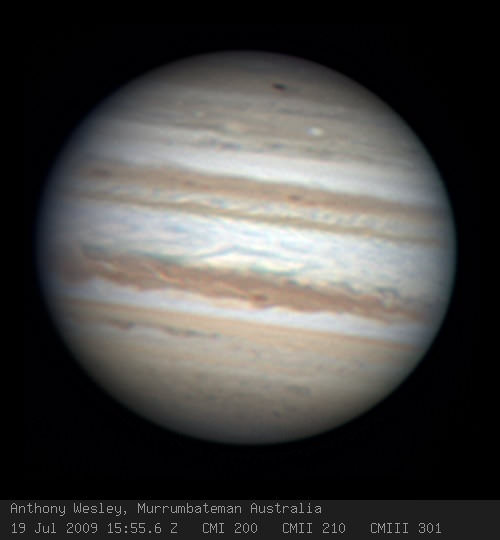
Amateur astronomer Anthony Wesley from Canberra, Australia captured an image of Jupiter on July 19 showing a possible new impact site. Anthony's image shows a new dark spot in the South Polar Region of Jupiter, at approximately 216° longitude in System 2. It looks very similar to the impact marks made on Jupiter when comet Shoemaker-Levy 9 crashed into the gas giant in 1994. (But read the Bad Astronomer's post that the black spot could also be weather.)
The list below shows the times (in UT) when the black spot will be visible again (generated in WinJupos by Hans-Joerg Mettig), and found on the Mike Salway's Ice In Space website.
(...)
Read the rest of Possible New Impact on Jupiter (351 words)
Kid's Astronomy: Sagittarius – A Seasonal Celebration!
Ah, yes… The skies have long been dark and the constellations have been on the move since the last time we've visited! Hercules now stands overhead when darkness falls. Summer's Lure, Scorpius is already going west of the meridian and Ophiuchus, the Fisher King has taken its place. In the southern hemisphere, they are tolerating winter – but the nights are warm in the north and with them comes our finest times of viewing our own Milky Way galaxy's spiral arm… Sagittarius. (...)
Read the rest of Kid's Astronomy: Sagittarius – A Seasonal Celebration! (1,906 words)
Weekend SkyWatcher's Forecast: July 17-19, 2009
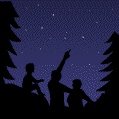 Greetings, fellow SkyWatchers! It's a picturesque weekend to get up early as the Moon heads for the Pleiades and on towards a close encounter with Venus. With plenty of dark skies to go around and the random meteor rate a little higher than usual, why not spend some time with the constellation of Lupus? No telescope or binoculars? No problem. There's also plenty of things to do over the next few days that only requires just your eyes and a little knowledge of the skies. I'll see you in the backyard… (...)
Greetings, fellow SkyWatchers! It's a picturesque weekend to get up early as the Moon heads for the Pleiades and on towards a close encounter with Venus. With plenty of dark skies to go around and the random meteor rate a little higher than usual, why not spend some time with the constellation of Lupus? No telescope or binoculars? No problem. There's also plenty of things to do over the next few days that only requires just your eyes and a little knowledge of the skies. I'll see you in the backyard… (...)
Read the rest of Weekend SkyWatcher's Forecast: July 17-19, 2009 (1,129 words)


